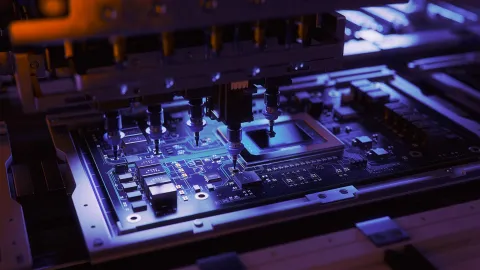10 pressing questions: Are you ready for SIC Instant Payments?

As the second wave of banks begins the final leg of the Swiss Interbank Clearing Instant Payments (SIC IP) transition, they’re playing a vital role in maintaining Swiss banking global competitiveness.
Despite the many advantages realized by migrating to SIC IP, banks transitioning to instant payments during this wave will face some critical challenges. Below are some of the most common questions related to the SIC IP implementation and answers to guide your bank’s journey.
1. Why is the Swiss National Bank mandating this transition to SIC IP?
Firstly, SIC5, the newest generation of the Swiss payment system, is a collaborative initiative between the Swiss National Bank (SNB) and SIX Interbank Clearing Ltd (SIX), with the SIC IP service enabling real-time settlement of funds 24 hours a day, 365 days a year.
The SNB initiated the SIC IP project to modernize the Swiss banking system and to improve Swiss banking competitiveness in a global market where real-time payments are gaining increasing traction.
2. What is the role of SIX in the SIC IP landscape?
SIX operates the SIC infrastructure on behalf of the SNB. SIX designed the new SIC payments platform to facilitate instant payments, settling funds in as little as 10 seconds, 24 hours a day, 365 days a year.
While the SIC platform utilizes existing interfaces to send and receive messages between banks, SIX built the new infrastructure to facilitate the speed and constant uptime required for the new instant payment network.
Utilizing the ISO 20022 messaging standard, the SIC platform supports richer data for improved straight-through processing of payments. The common language afforded by ISO 20022 also facilitates smoother operability between various schemes and platforms to support payments on a global scale across different networks.
3. Who is required to adopt SIC IP?
Any Swiss bank that sends and receives retail payments must migrate to SIC IP. While more than 60 of the largest banks in Switzerland have already completed the transition to SIC IP in Phase 1, the remaining banks are on deadline to complete the transition by November 2026.
4. What are the main benefits for banks and their customers?
SIC IP delivers a number of benefits to Swiss banks and the banking landscape as a whole. These include reduced operational costs, as automation results in lower transaction costs for banks, and optimized liquidity management, with instant settlement providing a more transparent view of cash positions, reducing the need to hold large cash reserves.
Lastly, improved customer satisfaction can be expected. Instant payment volumes are predicted to surpass $58 trillion globally by 2028, according to Juniper Research, competing with card payments as a preferred way to pay. Banks who provide instant payments support the way customers want to bank, generating higher levels of customer satisfaction.
5. How long should a typical SIC IP migration project take from start to go-live?
Banks should allot a minimum of six months from initial planning through initial testing with the SIC network. This timeframe allows for the complete evaluation, integration, and internal testing of systems before engaging with SIX for official testing and certification.
Testing, particularly end-to-end, testing is highly important. It may start immediately for some banks, as later testing windows are already fully booked. However, even banks with later testing deadlines should not delay preparation.
6. What changes are needed within the bank to support 24/7 payment processing and fraud monitoring?
Depending on a bank’s current state of readiness, changes to multiple systems and processes may be required to complete the transition to SIC IP.
Transitioning from batch-based processing systems to support the constant availability mandated by SIC requires a highly available system architecture. Banks may be facing changes to core systems, or the need to migrate to a new platform, if existing providers can’t meet the requirements. Many banks will also look for a solution that sits next to their existing core system, enabling high availability of the data and processing needs that are critical for instant payments. Some manual processes may need to be automated to meet the 10-second processing requirement.
In addition, banks will need to rethink how they handle fraud checks and compliance. SIC IP demands that fraud and sanctions screenings occur in real time, without delaying payments. Failing to consistently meet the 10-second SLA could result in compliance issues for the institution.
Operational support models will need to evolve as well. Banks may need to establish 24-hour operations teams to ensure round the clock availability of instant payments and to maintain uptime. Transition teams will also need to be established, to ensure the migration remains on track to reach the bank’s testing window and to establish a smooth and efficient rollout to customers.
7. Can our bank continue using our existing core banking provider?
Each bank will need to evaluate its current core systems and establish whether current capabilities can support the real-time, always-available environment required by SIC IP. Core platform providers who are not currently supporting instant payments, or are not on track to do so, could inhibit the bank’s ability to meet their testing deadline.
8. How does SIC IP compare to existing services like TWINT?
SIC IP operates as a new instant payment system that moves money between banks in real time. It supports retail payments in under 10 seconds with continuous availability and instant settlement.
TWINT, on the other hand, is a mobile app designed primarily for consumer payments. While operating in real time similar to SIC IP, TWINT operates on top of bank infrastructure and can’t facilitate real-time central bank settlement.
9. How does a bank handle fraud and sanctions screening in real-time without delaying settlement?
To meet the 10-second processing speed associated with SIC IP, banks must implement fraud and sanctions screening solutions designed specifically for real-time payment environments. Key capabilities to look for include high-speed screening engines with dynamic risk scoring, regular automated updates to sanction lists, and workflow automation for low-risk transactions.
AI-powered anti-money laundering (AML) transaction screening is an additional feature to seek, as continuous monitoring supported by AI can update risk profiles in real time.
One challenge banks will face when starting to process instant payments will be false positives, resulting in rejections. To avoid these, banks must fine tune the lists they are doing compliance screening against. Overall, banks need fraud and sanctions screening that provide clear audit trails and support the regulatory alignment.
10. What role does a service bureau play in helping banks transition to SIC IP?
A service bureau offers a critical service to banks, enabling connection to the SIC network, and hence SIC IP, without requiring banks to build or maintain infrastructure. However, the right service bureau can act as more than a platform connection. Banks should seek a service bureau with deep experience in Swiss interbank clearing. Service bureaus with a strong market presence and a track record of supporting real-time payments bring familiarity with multiple core banking platforms as well as a multitude of integration approaches. Equally important is the service bureau’s willingness to help guide the bank through the transition, offering migration and testing support to help ensure system readiness.
Need help with the SIC Instant Payments transition or SIC connectivity? Contact us today!
A variation of this article was previously published in Fintech Futures here.



